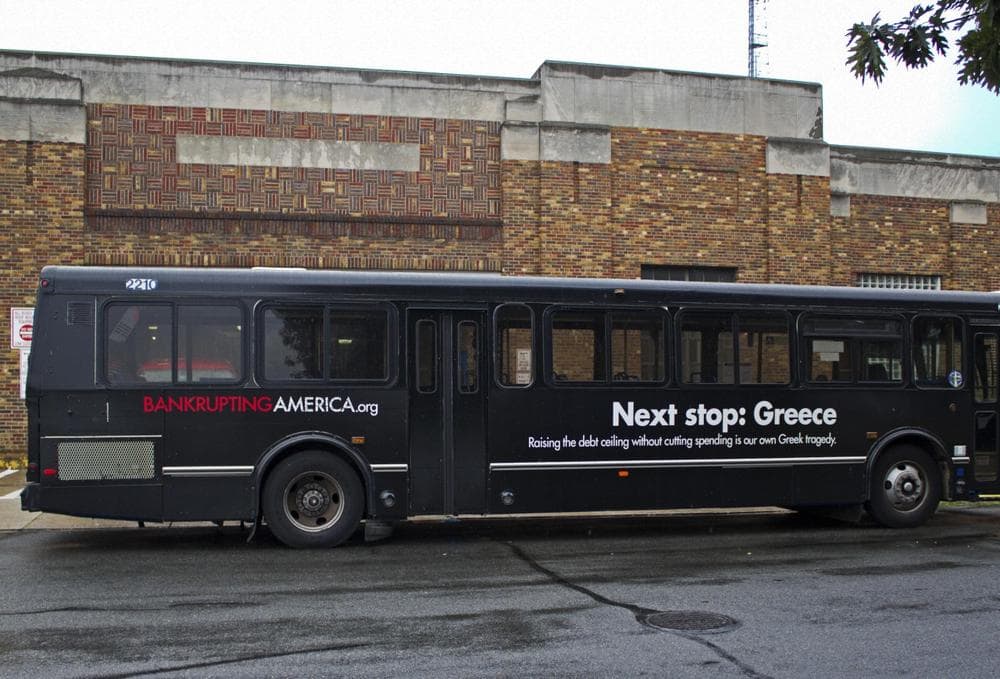Advertisement
Digging Deep Into Federal Default Scenarios
ResumeBarreling towards default. We’ll go deep on scenarios for the economy. They’re scary—and the politics. Scary too.

One week from today, we’re told, the United States of America is headed into default. For the first time in its history, a certifiable deadbeat. Full faith and credit of the United States, blown. In top business circles right now, they’re warning of catastrophe. The White House seconds that emotion. Tea Party Republicans are pooh-poohing the whole thing. Seeing upside. Ordinary Americans could be forgiven for feeling tied to the tracks with a big train coming – or going, over a cliff. Up next On Point: the default scenario, for the USA, and the world.
-- Tom Ashbrook
Guests
Martin Wolf, chief economics commentator at The Financial Times. (@martinwolf_)
Alan Auerbach, professor of economics and law at the University of California - Berkeley and director of the Burch Center for Tax Policy and Public Finance.
Austan Goolsbee, professor of economics at The University of Chicago's Booth School of Business, former Chairman of President Barack Obama's Council of Economic Advisers. (@Austan_Goolsbee)
From Tom's Reading List
Washington Post: As debt-limit deadline nears, investors show growing concern about a U.S. default — "Short-term borrowing by the Treasury Department became twice as expensive Tuesday as it had been the day before, one of the most significant signs of alarm in the bond markets since the financial crisis of 2008.The stock market, meanwhile, continued the steady slide that began in mid-September, when Boehner (R-Ohio) embraced a right-wing strategy for using the budget battles to try to dismantle Obama’s signature health-care initiative. The Standard & Poor’s 500-stock index fell 20.67 points to 1,655.45 on Tuesday. The Dow Jones industrial average dropped nearly 160 points to 14,776.53 and has lost nearly 6 percent of its value since hitting a one-year high Sept. 18."
New York Times: Many in G.O.P. Offer Theory: Default Wouldn’t Be That Bad -- "A surprisingly broad section of the Republican Party is convinced that a threat once taken as economic fact may not exist — or at least may not be so serious. Some question the Treasury’s drop-dead deadline of Oct. 17. Some government services might have to be curtailed, they concede. “But I think the real date, candidly, the date that’s highly problematic for our nation, is Nov. 1,” said Senator Bob Corker, Republican of Tennessee. Others say there is no deadline at all — that daily tax receipts would be more than enough to pay off Treasury bonds as they come due."
Financial Times: America Flirts With Self-Destruction -- "Is the US a functioning democracy? This week legislators decided to shut down a swath of the federal government rather than allow an enacted health law go into operation at the agreed moment. They may go further; if they do not vote to raise the so-called “debt ceiling”, they risk triggering default on US government debt – a fate far worse than the shutdown or fiscal sequestration. If the opposition is prepared to inflict such damage on their own country, the restraint that makes democracy work has gone. Why has this happened? What might be the result? What should the president do?"
This program aired on October 10, 2013.